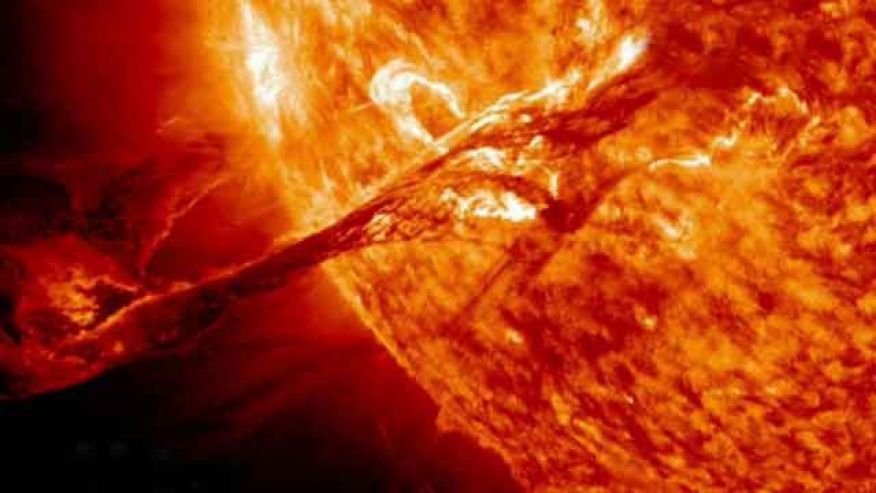Large magnetic storms from the Sun, which affect technologies such as GPS and utility grids, could soon be predicted more than 24 hours in advance.
Coronal mass ejections (CMEs) are eruptions of gas and magnetised material from the Sun that have the potential to wreak havoc on satellites and Earth-bound technologies, disrupting radio transmissions and causing transformer blowouts and blackouts.
These mass ejections can cause problems with GPS technology – used by all kinds of vehicles, from cars to oil tankers to tractors. For example, they can affect the ability of aircraft systems to judge precisely a plane’s distance from the ground for landing, leading to planes being unable to land for up to an hour.
However, not every mass ejection from the Sun that travels past the Earth causes this much disturbance; the power depends on the orientation of magnetic fields within the mass ejection. Currently, satellites can only tell the orientation of a mass ejection’s magnetic field with any certainty when it is relatively close to the Earth, giving just 30-60 minutes’ notice. This is not enough time to mitigate the impacts on utility grids and systems operating on GPS.
Now, a new measurement and modelling tool could give more than 24 hours’ notice of mass ejections that could be harmful to systems on Earth. Details of the technique, developed by a team led by Dr Neel Savani, an alumnus and Visiting Researcher at Imperial College London and a space scientist at NASA’s Goddard Space Flight Center, were published today in a paper in Space Weather.

